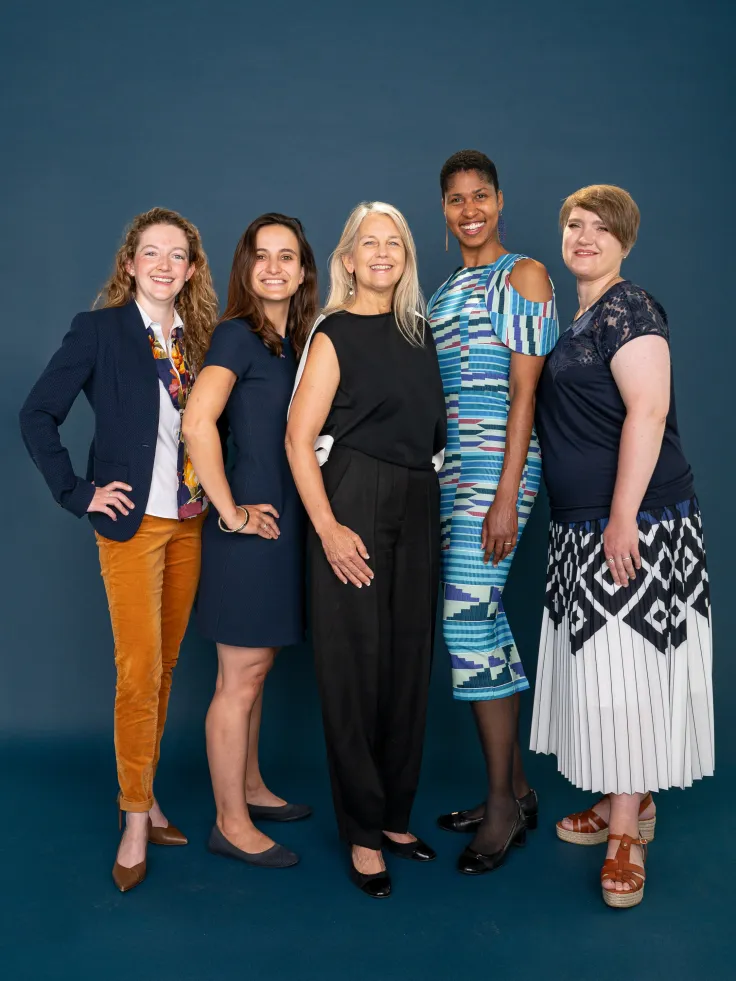My oldest was a sophomore at Rhode Island School of Design (RISD) when the Covid-19 lockdown hit. Her school shut down right before spring break and she decided to take the second semester off. The timing was perfect because she had landed an internship at MIT Media Lab, a place she was really excited to be at.
Her project ended up being nearly a full-time job as she was the only designer on the team charged with creating the eyeglasses that needed to hold the tech used to monitor both eye movement and brain waves. Also, as a sophomore just beginning her studies in Industrial Design, she wasn’t that experienced in CAD (Computer Aided Design).
She worked intensely to create the first designs for the project and then was allowed to pull in a few of her friends who were older and had more experience with CAD. Everything was top secret, as she had signed an N.D.A. (non-disclosure agreement), though there was a public website with a very preliminary design of the glasses.
And then we heard the most exciting news. These glasses were going to outer space. Specifically, NASA astronauts were going to test them on the space station. There is also a write-up in the M.I.T. Technology News that includes her P.I. (principal investigator), Nataliya Kosmyna. My daughter’s name is in the article as well!
Zoe Lee, RISD Industrial Design Major, Published in MIT Technology Review
Nataliya Kosmyna
Nataliya Kosmyna can’t read your mind, but she designs technology that does. Or that’s what it feels like, anyway: her work focuses on brain-computer interfaces (BCIs), which use sensors to track brain activity—a process so effective at determining what’s happening inside someone’s head that she embedded her technology in a simulacrum of the magical Sorting Hat from the Harry Potter books. (She calls it the Thinking Cap.)
Raised in a village in Ukraine and educated at the Université Grenoble-Alpes in France, Kosmyna joined the Media Lab’s Fluid Interfaces Group as a postdoctoral associate in 2017 and has been serving as a research scientist since 2021. There, she’s been developing technology that can enhance human abilities both on Earth and in space.
Kosmyna’s BCIs use noninvasive sensors that rest on the surface of the wearer’s head. Some detect eye movements; others act as portable electroencephalogram machines, detecting the electrical impulses created by brain activity through electrodes that might be embedded in hats, eyeglasses, or other wearable items. With a system like this, it might be possible to use brain waves to control technology such as drones, robots, and home appliances, or to provide feedback to users or researchers about the wearer’s current levels of creativity and attention.

NATALIYA KOSMYNA (INVENTOR, SCIENCE, ENGINEERING); ZOE LEE, GUN BOLUKBASI (DESIGN); CHRISTOPHER MARKUS (FABRICATION); CASSIE SCHEIRER (PHOTO)
For astronauts, this kind of technology has the potential to support safer operations. While researchers are still learning about how space travel affects the human body, it’s clear that the more time astronauts spend in space, the more their mental health, circadian rhythms, attention, and performance are disrupted, says Kosmyna. That can be problematic when they need to perform cognitively challenging tasks like docking a spacecraft, for example.
Kosmyna’s tech could provide future astronaut teams with auditory or haptic feedback about their brain activity, letting them know in real-time whether they are ready to perform crucial tasks with the precision those tasks require.
“Optimizing the performance and attention, specifically in astronauts on long-duration space flights, is the problem we’re trying to solve,” she says.
p.s. Related posts:
RISD Industrial Design Students Win BlueGreen Innovation
Indigo, Samurai, and My Daughters’ Clothing Company
Teen Entrepreneur: indigo clothing co. co-founder presents at Entrepreneurship Day
Learning About Industrial Design
What Is Industrial Design at RISD?
To examine any book more closely at Indiebound or Amazon, please click on image of book.
As an Amazon and IndieBound Associate, I earn from qualifying purchases.
Follow PragmaticMom’s board STEAM on Pinterest.
Follow PragmaticMom’s board Art with Kids on Pinterest.
My books:
Food for the Future: Sustainable Farms Around the World
- Junior Library Guild Gold selection
- Selected as one of 100 Outstanding Picture Books of 2023 by dPICTUS and featured at the Bologna Children’s Book Fair
- Starred review from School Library Journal
- Chicago Library’s Best of the Best
- Imagination Soup’s 35 Best Nonfiction Books of 2023 for Kids
Amazon / Barefoot Books / Signed or Inscribed by Me











